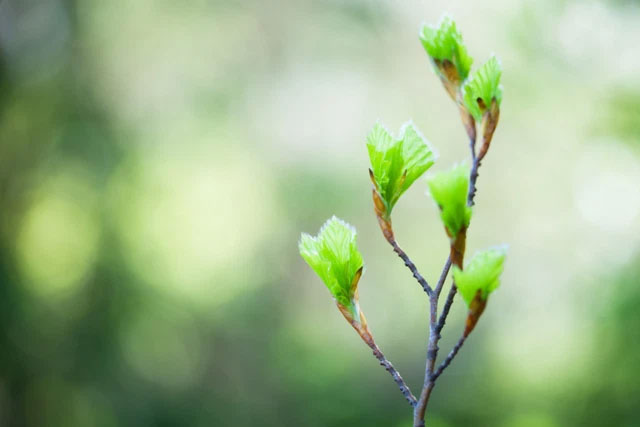Researchers from Ohio State University in the United States have reported that the decrease in the total number of rainy days is causing plants to bloom earlier in northern climates, leading to spring arriving sooner than expected.
Their study indicates that with the current amount of rainfall, new leaves will sprout 1-2 days earlier each decade.

Warmer temperatures affect the start of spring
While previous studies have focused on how warmer temperatures due to climate change will affect the start of spring, this is one of the first studies to concentrate on rainfall.
Desheng Liu, a co-author of the study, stated: “Scientists have primarily considered how temperature affects when new leaves bud, and if they do consider rainfall, it is only the total amount. However, the total amount of rainfall is not necessarily the most important factor; rather, it is the frequency of rain.”
Why does rainfall affect the start of spring?
According to the researchers, there are two main reasons why reduced rainfall leads to an earlier spring.
- First, trees and plants receive more solar radiation throughout the year when there are fewer rainy days, stimulating leaf development.
- Second, fewer cloudy days also mean higher daytime temperatures and more sunlight, warming the ground and atmosphere. Nighttime temperatures then drop quickly without clouds to retain heat.
In their research, scientists analyzed data from the United States, Europe, and China, including the annual leaf emergence dates and the number of rainy days each month. They also studied satellite images from 1982 to 2018, recording when vegetation began to flourish.
The analysis revealed that as the number of rainy days has gradually decreased over the years, spring has arrived earlier in most regions of the Northern Hemisphere.

Spring arrives earlier in most regions of the Northern Hemisphere.
Based on their findings, the researchers calculated that the decline in rainfall in the future will also mean that spring will arrive 10 days earlier by the year 2100.
Jian Wang, another co-author of the study, mentioned: “We can expect an earlier spring in the future compared to what current models indicate. This contrasting effect occurring early in the year makes trees think it is spring and will lead to them budding leaves earlier and earlier.”
If spring begins earlier, it could create a domino effect impacting the entire ecosystem, including other wildlife.
Professor Ulf Buntgen, a researcher from the Department of Geography at the University of Cambridge who did not participate in the study, shared: “When plants bloom too early, late frosts can kill them. But the risk is even greater when it disrupts the ecosystem.”
Plants, insects, birds, and other wildlife have evolved together, creating synchrony in their developmental stages. A particular plant blooming will attract a specific type of insect, which in turn attracts a specific type of bird, and so on.
However, if one species reacts faster than others, the risk of a lack of synchrony could lead to crises for species that cannot adapt quickly enough.


















































